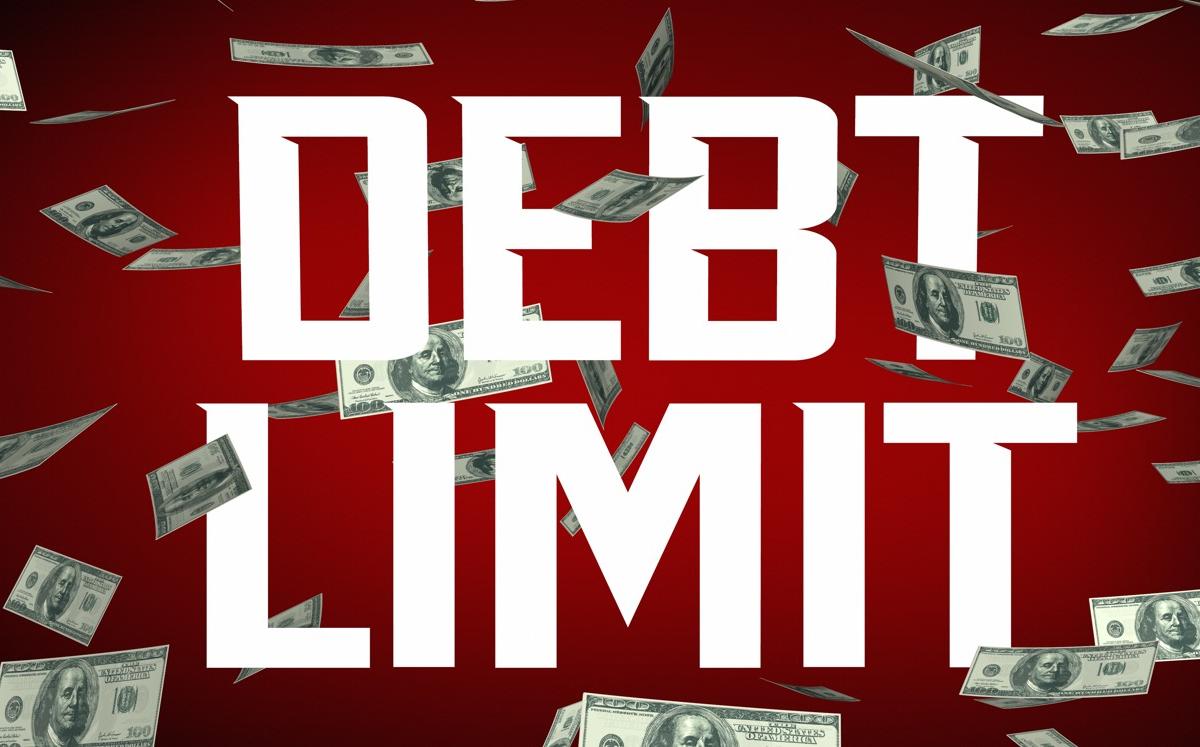The regime is trying to whip up maximum hysteria or the chances that the US government could default on its debts if the debt ceiling is not raised.
Anyone whose been paying attention for a while, however, knows there’s a 99.99% change that the parties involved will soon raise the debt ceiling and the US will go back to adding to its $30-trillion-plus debt hoard as usual. Yet, the political posturing over the debt ceiling always offers the media and Democratic politicians a chance to assure us that any default will bring about a second Great Depression and financial collapse.
One key component of this strategy is convincing people that the United States has never defaulted before, and has always made good on its financial obligations. This is key because it helps create the impression that were the United States to default, the result would a step into the great unknown, and a “financial crisis and a calamity.”
As part of this strategy, Treasury secretary Janet Yellen is at again, and repeating her often-used claims the US has never defaulted. This week, she’s telling the usual story on ABC news, claiming “America has paid all of its bill on time since 1789.”
America has paid all of its bills on time since 1789, and not doing so would produce an economic and financial catastrophe. Every responsible member of Congress must agree to raise the debt ceiling. It’s something that simply can’t be negotiable. pic.twitter.com/bQeclv7Bba
— Secretary Janet Yellen (@SecYellen) February 6, 2023
Yet the United States government has most certainly defaulted on debts before—more than once. Moreover, if we expand the idea of default slightly, to encompass the idea of inflating away a government’s debt in real terms, default is even more common.
First, let’s look at the most notorious case of US default on its debt obligation.
The 1934 Default on Liberty Bonds
In 1934, the United States defaulted on the fourth Liberty Bond. The contracts between debtor and creditor on these bonds was clear. The bonds were to be payable in gold. This presented a big problem for the US, which was facing big debts into the 1930s after the First World War. As described by John Chamberlain:
By the time Franklin Roosevelt entered office in 1933, the interest payments alone were draining the treasury of gold; and because the treasury had only $4.2 billion in gold it was obvious there would be no way to pay the principal when it became due in 1938, not to mention meet expenses and other debt obligations. These other debt obligations were substantial. Ever since the 1890s the Treasury had been gold short and had financed this deficit by making new bond issues to attract gold for paying the interest of previous issues. The result was that by 1933 the total debt was $22 billion and the amount of gold needed to pay even the interest on it was soon going to be insufficient.
So how did the US government deal with this? Chamberlain notes “Roosevelt decided to default on the whole of the domestically-held debt by refusing to redeem in gold to Americans.”
Moreover, with the Gold Reserve Act of 1934, Congress devalued the dollar from $20.67 per ounce to $35 per ounce—a reduction of 40 percent. Or, put another way, the amount of gold represented by a dollar was reduced to 59 percent of its former amount.
The US offered to pay its creditors in paper dollars, but only in new, devalued dollars.1 This constituted default on these Liberty Bonds, since, as the Supreme Court noted in Perry v. United States, Congress had “regulated the value of money so as to invalidate the obligations which the Government had theretofore issued in the exercise of the power to borrow money on the credit of the United States.”
This was clearly not a case of the US making good on its debt obligations, and to claim this is not default requires the sort of hairsplitting that only the most credulous Beltway insider could embrace.
Indeed, Carmen Reinhart and Kenneth Rogoff in their book This Time Is Different list this episode as a “default (by abrogation of the gold clause in 1933)” and as “de facto default.”2
The Short Default of 1979
A second, less egregious case of default occurred in 1979. As Jason Zweig noted in 2011:
In April and May 1979, amid computer malfunctions, heavy demand from small investors and in the wake of Congressional debate over raising the debt ceiling, the U.S. failed to make timely payments on some $122 million in Treasury bills. The Treasury characterized the problem as a delay rather than as a default. While the error affected only a fraction of 1% of the U.S. debt, short-term interest rates—then around 9%—jumped 0.6 percentage point and the U.S. was promptly sued by bondholders for breach of contract.
Apparently, the United States sometimes does not pay its debts. While the 1979 default was relatively small, the 1934 default affected millions of Americans who had bought Liberty Bonds mistakenly thinking the government would make good on its promises. They were very wrong.
So, it is simply untrue that the US has never defaulted as Yellen claims. But this claim remains a useful tactic in sowing fear about “unprecedented” acts that would bring the entire US economy crashing down.
Default through Devaluation
But outright repudiation of contracts is only one way of defaulting on one’s obligations. Another is to deliberately devalue a nation’s currency—i.e., inflate it—so as to devalue the amount of debt a government owns in real terms.
And Zweig writes investors view this as a real form of avoiding one’s debt obligations:
Perhaps the biggest worry [among investors] isn’t default but … “financial repression.” In dozens of cases, governments have dug out from under burdensome debts not by refusing to pay interest but rather through other harsh means. For example, by keeping short-term interest rates below the level of inflation, a government can pay off its bondholders with cheapening money. Through regulations, it can compel banks and other financial firms to buy its own debt, much like geese being force-fed for foie gras. As a result, current yields and future inflation-adjusted returns on government bonds fall.
This strategy, Zweig concludes, “stiffs bond investors with negative returns after inflation.”
Zweig categorizes this as something separate from default, but Reinhart and Rogoff clearly consider it a form of de facto default. They write: “The combination of heightened financial repression with rises in inflation was an especially popular form of default from the 1960s to the early 1980s” (emphasis added).3
(In the United States, a key event in this respect occurred in 1971 when Nixon closed the gold window. This was an explicit repudiation of the US’s obligation to repay dollars in gold to foreign states, and it also greatly enabled the US government in terms of financial repression and monetary inflation.)
Since the Great Recession, financial repression is popular again. This method of de facto default has enabled the federal government to take on massive amounts of new debt at rock-bottom interest rates. In real terms, the US government—or any government using this tactic—pays back its debts in devalued currency, essentially enabling the government to make good on the full extent of its debts. The cost to the public manifests in asset price inflation, goods price inflation, and a “hunt for yield” driven by a famine of income on safe assets. Americans of more modest means are those who suffer the most, and the result has been a widening gap of inequality in wealth.
It may very well be that a default could lead to significant economic and financial disruptions. But let’s stop pretending that a default is unprecedented or that the United States always pays its bills. It’s true that the US’s current debt machine, enabled through financial repression, is a form of slow-motion default. But that doesn’t make the US government any less of a deadbeat.
1. The Supreme Court summed it up this way: “The Joint Resolution of June 5, 1933, had enacted that such bonds should be discharged by payment, dollar for dollar, in any coin or currency which, at time of payment, was legal tender for public and private debts. The bondholder, having been refused payment in gold coin of the former standard or in an equal weight of gold, demanded currency in an amount exceeding the face of the bond in the same ratio as that borne by the number of grains in the former gold dollar to the number in the existing one—or $1.69 of currency for every dollar of the bond. The Treasury declined to pay him more than the face of the bond in currency, and he sued in the Court of Claims.”
2. Carmen M. Reinhart and Kenneth S. Rogoff, This Time Is Different: Eight Centuries of Financial Folly (Princeton, NJ: Princeton University Press, 2009), pp. 111, 117.
3. Ibid., p. 117.
























